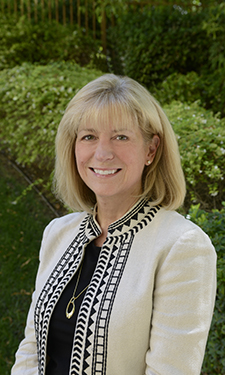 I live in a river city. In fact, St. Louis is home to the confluence of the Missouri and Mississippi rivers, two of the largest watersheds in the United States. My daily job is to oversee the development of a large greenway system. We work in watersheds. Flooding is a way of life — we are used to it. Well, we were used to it. Rain started to fall this past Christmas through New Year’s Eve on a scale we had never seen before. The Meramec River, a mostly sleepy river by our standards, came out of its banks in historic proportions. The Mississippi River followed suit. The Missouri rose but, because of our great flood in 1993, is now protected by a levee system, thus diverting flood waters to impact parts of the region that had never experienced flood levels of this scale. Major interstates closed due to high water and people were stranded in cars, homes, businesses. Many lost their houses, and people died in the raging rivers. It was a scary, sobering experience. In March of this year, we watched a similar scenario unfold in the state of Louisiana. If you have lived through this kind of experience, your story serves as another reminder that nature makes its own plans.
I live in a river city. In fact, St. Louis is home to the confluence of the Missouri and Mississippi rivers, two of the largest watersheds in the United States. My daily job is to oversee the development of a large greenway system. We work in watersheds. Flooding is a way of life — we are used to it. Well, we were used to it. Rain started to fall this past Christmas through New Year’s Eve on a scale we had never seen before. The Meramec River, a mostly sleepy river by our standards, came out of its banks in historic proportions. The Mississippi River followed suit. The Missouri rose but, because of our great flood in 1993, is now protected by a levee system, thus diverting flood waters to impact parts of the region that had never experienced flood levels of this scale. Major interstates closed due to high water and people were stranded in cars, homes, businesses. Many lost their houses, and people died in the raging rivers. It was a scary, sobering experience. In March of this year, we watched a similar scenario unfold in the state of Louisiana. If you have lived through this kind of experience, your story serves as another reminder that nature makes its own plans.
As a steward of public lands, I have become deeply mindful of our responsibility to conserve and preserve our watersheds. Land use practices have changed our lives, but the impact of watersheds is a constant. Levees only move water downstream. Building in low lands and floodplains doesn’t change what happens to where water flows. As a park district with more than 100 miles of greenways and amenities, we are continually forced to discern where and where not to build. We have made some mistakes and learned hard lessons. The balance between conserving land and connecting people to their rivers and open spaces is an unending debate that many park departments near watersheds or coastal communities deal with every day. Employing best-management practices, limiting development in wetlands and floodplains and working in partnership with like-minded organizations is crucial.
We need floodplains, wetlands, prairies and forests integrated into our communities and land use practices to provide an ecosystem that serves our communities, our economy and our environment. Doing this gives us the long-term benefits of flood mitigation, improved water quality, carbon sequestration and improved wildlife habitat. We learned through a recent study on our Meramec Greenway by Margaret Wall (funded by the National Oceanic and Atmospheric Association) that there is great economic benefit from developing the greenway system in watersheds. Property value increases and annual avoidance of flood damage costs present a very strong economic argument for limiting development in floodplains.
This month’s issue is focused on numerous conservation practices and programs. I hope the articles challenge your thinking and encourage you to educate your community about the value of enhancing our ecosystems. Collaborating to conserve has enormous benefits — not only to our communities, but also to our nation.
Susan K. Trautman, CPRP, is the Chair of NRPA's Board of Directors.

